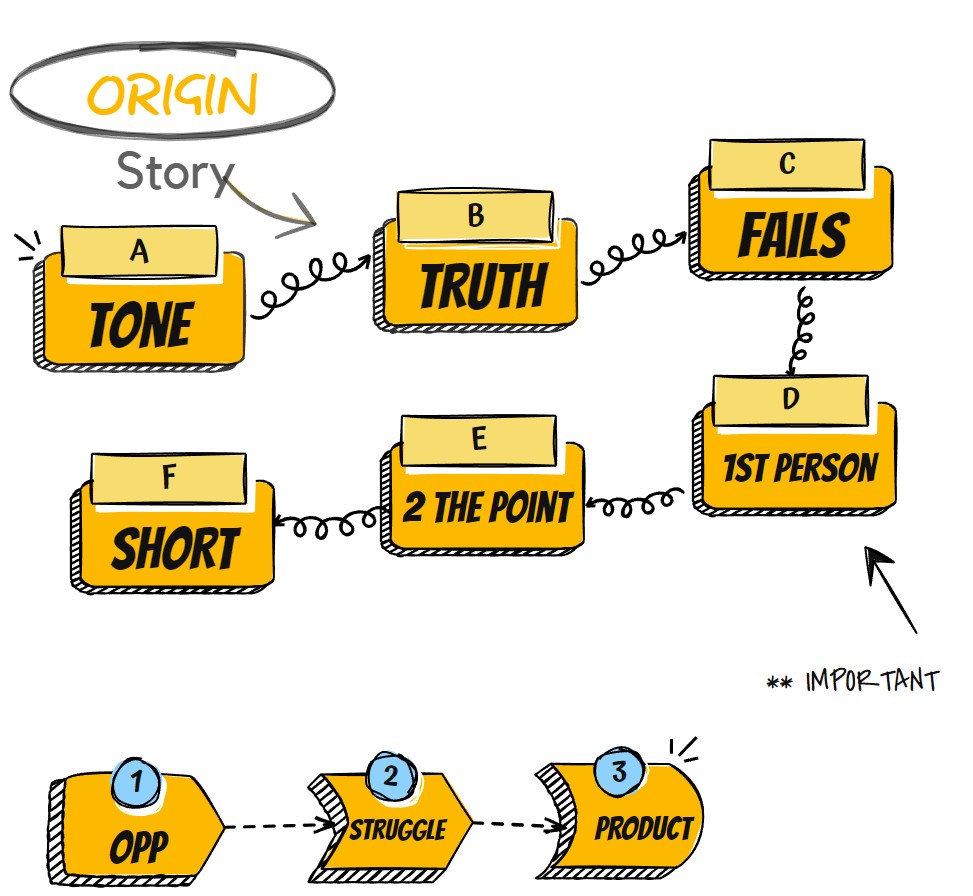(This is a continuation of our #storytelling series, specifically https://federicoandino.com.ar/2022/08/23/storytelling-crafting-an-origin-story/)
You have crafted an elevator pitch Origin Story. Something that you can actually pull off the cuff, that can help you drive your brand.
But what can you do when you need to craft a longer story, not for improvised storytelling, but deliberate storytelling?
Let me introduce you to the greatest crossover in structures of the last hundred years: the three-act structure x the hero’s journey.
We’ll cover each more in-depth in the future, but let’s start with something actionable: crafting a longer-form Origin Story based on it.
We have to cover three acts, so the basic structure is:
- Beginning
- Conflict
- Resolution
This we could very simple summarize at the product level with:
- Idea
- How we created the product
- Where we are nowBut let’s make it more interesting with a little of Hero’s Journey. Let’s reframe the Three Acts:
- The Opp: You saw it. This is when you explain what makes the product or your brand different. It can be context; it can be the product itself. But this is you being bitten by a radioactive spider. It is what defines the story.
- The Struggle: unlike the “how we created the product” story, here the focus is on what the challenges were. Was that it was so new? Did you face shortages in production? Was your particular brand seen as disruptive? The focus here is not only on the challenges, but in the overcoming of them. We want to tell the story of us triumphing, but that only has value in relation to the challenge itself.
- The Product: After all the struggle, how did your product or brand change? You cannot have the same thing as when you began. It will surely have changed. Perhaps some products or some brands triumphed almost at the gate, but those were inheritors of other attempts. If you share not the product but the experience of the creation, it is easier to become invested on it.This is a very easy 1-2-3 structure, but it remains a classic for a reason. Keep it and you will see how your own Origin Story takes form.

Once you get it into the structure, check these six points to make sure your story will connect to your audience:
- Tone: keep it light, keep it entertaining.
- Truth: don’t exaggerate or lie. One person who catches you and there goes your audience.
- Fails: Keep those occasions when you failed in. It makes the eventual success sweeter.
- 1st Person: telling a story this way resonates a lot more than the third person, since it sounds like a report. Telling in the 2nd person is trickier, but an interesting approach.
- To the point: trim the fat. We should summarize things that repeat themselves. We should highlight things that require special attention.
- Short: don’t beat around the bush. Keep the story moving. Aim at five minutes of total time.
- Record yourself, first on voice and then on video. See how it plays. And if you like, share your Origin Story on the comments! Next time, we’ll focus on the Hero’s Journey and how it can help (or hinder) Storytelling. See you soon!

Please note: I reserve the right to delete comments that are offensive or off-topic.